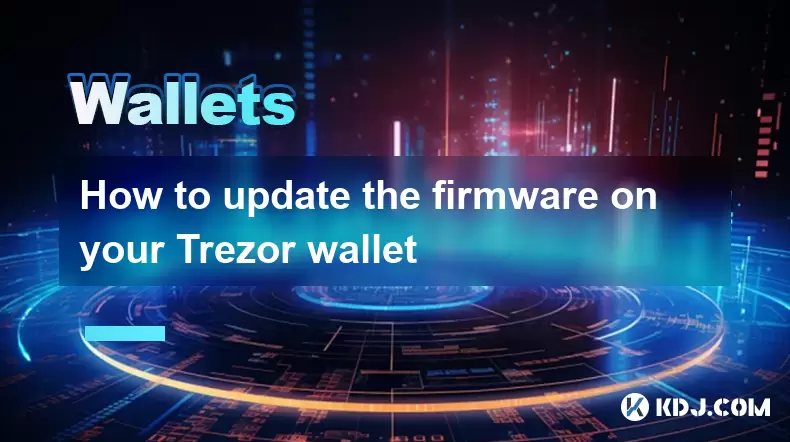-
 Bitcoin
Bitcoin $117500
2.15% -
 Ethereum
Ethereum $3911
6.19% -
 XRP
XRP $3.316
10.79% -
 Tether USDt
Tether USDt $1.000
0.01% -
 BNB
BNB $787.2
2.24% -
 Solana
Solana $175.2
4.15% -
 USDC
USDC $0.9999
0.00% -
 Dogecoin
Dogecoin $0.2225
8.40% -
 TRON
TRON $0.3383
0.28% -
 Cardano
Cardano $0.7868
6.02% -
 Stellar
Stellar $0.4382
9.34% -
 Hyperliquid
Hyperliquid $40.92
7.56% -
 Sui
Sui $3.764
7.63% -
 Chainlink
Chainlink $18.48
10.66% -
 Bitcoin Cash
Bitcoin Cash $582.1
1.88% -
 Hedera
Hedera $0.2601
6.30% -
 Avalanche
Avalanche $23.33
4.94% -
 Ethena USDe
Ethena USDe $1.001
0.02% -
 Litecoin
Litecoin $122.3
2.04% -
 UNUS SED LEO
UNUS SED LEO $8.969
-0.27% -
 Toncoin
Toncoin $3.339
0.86% -
 Shiba Inu
Shiba Inu $0.00001287
4.30% -
 Uniswap
Uniswap $10.43
7.38% -
 Polkadot
Polkadot $3.861
5.08% -
 Dai
Dai $1.000
0.02% -
 Bitget Token
Bitget Token $4.513
3.41% -
 Monero
Monero $267.7
-6.18% -
 Cronos
Cronos $0.1499
4.14% -
 Pepe
Pepe $0.00001110
5.15% -
 Aave
Aave $284.9
8.28%
Hot Wallet vs. Cold Wallet Security Comparison: How to Avoid Asset Losses?
Hot wallets offer convenience for frequent crypto transactions but are vulnerable to hacks; cold wallets provide superior security for long-term storage but are less convenient.
Apr 19, 2025 at 11:56 pm

When it comes to managing cryptocurrencies, security is paramount. One of the critical decisions you'll face is choosing between a hot wallet and a cold wallet. Hot wallets are connected to the internet, making them convenient for frequent transactions but more vulnerable to hacks. Cold wallets, on the other hand, are offline, offering superior security at the cost of less convenience. Understanding the differences between these two types of wallets and how to use them effectively can help you avoid asset losses. Let's delve into a detailed comparison and explore strategies to safeguard your digital assets.
Understanding Hot Wallets
Hot wallets are digital wallets that are connected to the internet, making them accessible from smartphones, computers, or web browsers. They are designed for the ease of use, allowing users to quickly send and receive cryptocurrencies. Popular examples include Coinbase Wallet, MetaMask, and Trust Wallet.
The primary advantage of hot wallets is their convenience. You can manage your cryptocurrencies on-the-go, making them ideal for daily transactions and trading. However, this connectivity to the internet also makes them more susceptible to cyber attacks. Hackers can target these wallets through phishing attacks, malware, and other forms of cybercrime.
To mitigate these risks, it's crucial to use reputable hot wallet services that employ robust security measures. Look for wallets that offer two-factor authentication (2FA), encryption, and regular security audits. Additionally, never share your private keys or seed phrases with anyone, and be wary of any unsolicited communications asking for personal information.
Understanding Cold Wallets
Cold wallets are offline storage solutions that keep your cryptocurrencies completely disconnected from the internet. They are often in the form of hardware devices, like the Ledger Nano S or Trezor, or paper wallets where your private keys are printed on a physical medium.
The main advantage of cold wallets is their high level of security. Since they are not connected to the internet, they are immune to online hacking attempts. This makes them the preferred choice for long-term storage of large amounts of cryptocurrencies.
However, cold wallets are less convenient for frequent transactions. You'll need to connect your hardware wallet to a computer to initiate a transaction, which can be cumbersome. Despite this, the peace of mind that comes with knowing your assets are safe from online threats is often worth the extra effort.
Comparing Security Features
When comparing the security features of hot and cold wallets, it's important to consider several factors:
- Connectivity: Hot wallets are always connected to the internet, making them more vulnerable to cyber attacks. Cold wallets, being offline, are inherently more secure.
- Encryption: Both types of wallets typically use encryption to protect your private keys. However, the implementation and strength of encryption can vary between different wallet providers.
- Two-Factor Authentication (2FA): Many hot wallets offer 2FA as an additional layer of security. While some cold wallets also support 2FA, it's less common due to their offline nature.
- Physical Security: Cold wallets require physical possession, adding an extra layer of security. If someone steals your hardware wallet, they would still need your PIN or seed phrase to access your funds.
Understanding these differences can help you make an informed decision based on your specific needs and risk tolerance.
Strategies to Avoid Asset Losses with Hot Wallets
To minimize the risk of asset losses when using hot wallets, follow these best practices:
- Use Strong Passwords: Always use a strong, unique password for your hot wallet. Avoid using easily guessable passwords and consider using a password manager.
- Enable Two-Factor Authentication (2FA): Activate 2FA whenever possible to add an extra layer of security. This can prevent unauthorized access even if someone gains your password.
- Keep Software Updated: Regularly update your wallet software to protect against known vulnerabilities. Wallet providers often release updates to address security issues.
- Beware of Phishing Attacks: Be cautious of emails, messages, or websites that ask for your private keys or seed phrases. Always verify the authenticity of any communication before responding.
- Limit Stored Amounts: Only keep the amount of cryptocurrency in your hot wallet that you need for immediate transactions. Transfer larger amounts to a cold wallet for safer storage.
Strategies to Avoid Asset Losses with Cold Wallets
Similarly, here are some strategies to ensure the security of your assets when using cold wallets:
- Secure Your Seed Phrase: Your seed phrase is the key to your wallet. Write it down and store it in a safe, secure location. Never store it digitally or share it with anyone.
- Use a Strong PIN: Set a strong PIN for your hardware wallet. This adds an additional layer of security if someone gains physical access to your device.
- Regularly Backup Your Wallet: Create regular backups of your cold wallet. This can help you recover your funds if your device is lost, stolen, or damaged.
- Verify Transactions: When connecting your cold wallet to a computer to initiate a transaction, always double-check the recipient's address and the amount. This can prevent accidental transfers.
- Keep Firmware Updated: Just like with hot wallets, keep your hardware wallet's firmware updated to protect against known vulnerabilities.
Choosing the Right Wallet for Your Needs
Deciding between a hot wallet and a cold wallet depends on your specific needs and how you plan to use your cryptocurrencies. If you're an active trader or frequently make transactions, a hot wallet might be more suitable due to its convenience. However, if you're looking to store large amounts of cryptocurrencies for the long term, a cold wallet offers superior security.
Consider using a combination of both types of wallets. You can keep a small amount of cryptocurrency in a hot wallet for daily use and store the majority of your assets in a cold wallet for long-term security. This hybrid approach can offer the best of both worlds, balancing convenience and security.
Frequently Asked Questions
Q: Can I use both a hot wallet and a cold wallet at the same time?
A: Yes, you can use both types of wallets simultaneously. Many users keep a small amount of cryptocurrency in a hot wallet for daily transactions and store the majority of their assets in a cold wallet for long-term security. This approach allows you to balance convenience and security.
Q: What should I do if I lose my cold wallet?
A: If you lose your cold wallet, you can still recover your funds if you have your seed phrase. Keep your seed phrase in a secure location and never store it digitally. With the seed phrase, you can restore your wallet on a new device and regain access to your cryptocurrencies.
Q: How often should I transfer funds from my hot wallet to my cold wallet?
A: The frequency of transferring funds from your hot wallet to your cold wallet depends on your transaction needs. As a general rule, only keep the amount of cryptocurrency in your hot wallet that you need for immediate use. Transfer larger amounts to your cold wallet regularly to minimize the risk of asset losses.
Q: Are there any fees associated with using hot and cold wallets?
A: Both hot and cold wallets may have associated fees, depending on the provider and the type of transactions you're making. Hot wallets often have transaction fees when sending cryptocurrencies, while cold wallets may have fees for purchasing the hardware device. Always check the fee structure of your chosen wallet before using it.
Disclaimer:info@kdj.com
The information provided is not trading advice. kdj.com does not assume any responsibility for any investments made based on the information provided in this article. Cryptocurrencies are highly volatile and it is highly recommended that you invest with caution after thorough research!
If you believe that the content used on this website infringes your copyright, please contact us immediately (info@kdj.com) and we will delete it promptly.
- Tron's Sell-Off Spurs Altcoin Shift: What's Next for TRX?
- 2025-08-08 08:30:12
- RUVI Presale: Is the Growth Potential Real?
- 2025-08-08 09:10:12
- Sleep Token's US Takeover: Thornhill Rides the 'Even In Arcadia' Wave
- 2025-08-08 08:30:12
- FTT Token's Wild Ride: Creditor Repayments vs. Market Drop - A New Yorker's Take
- 2025-08-08 07:10:12
- Floki Crypto Price Prediction: Riding the Robinhood Rocket or Just a Meme?
- 2025-08-08 07:15:12
- EigenLayer, Restaking, and Ethereum: Navigating the Hype and the Hazards
- 2025-08-08 06:30:12
Related knowledge

How to buy Dogecoin on MetaMask
Aug 08,2025 at 03:42am
Understanding Dogecoin and MetaMask CompatibilityDogecoin (DOGE) is a popular meme-based cryptocurrency that operates on its own blockchain, originall...

How to create a new crypto wallet
Aug 07,2025 at 09:22pm
Understanding the Basics of a Cryptocurrency WalletA cryptocurrency wallet is a digital tool that allows users to store, send, and receive digital ass...

How to add Fantom network to MetaMask
Aug 07,2025 at 08:21am
Understanding the Fantom Network and MetaMask IntegrationThe Fantom network is a high-performance, scalable, and secure blockchain platform designed f...

How to update the firmware on your Trezor wallet
Aug 07,2025 at 05:00pm
Understanding the Role of Staking in Cryptocurrency EcosystemsStaking has become a fundamental component of many blockchain networks that operate unde...

How to export your transaction history from Coinbase Wallet
Aug 07,2025 at 06:50am
Understanding Coinbase Wallet and Transaction HistoryCoinbase Wallet is a self-custodial cryptocurrency wallet that allows users to store, manage, and...

How to export your transaction history from Coinbase Wallet
Aug 07,2025 at 08:49am
Understanding Coinbase Wallet and Transaction HistoryCoinbase Wallet is a self-custodial cryptocurrency wallet that allows users to store, manage, and...

How to buy Dogecoin on MetaMask
Aug 08,2025 at 03:42am
Understanding Dogecoin and MetaMask CompatibilityDogecoin (DOGE) is a popular meme-based cryptocurrency that operates on its own blockchain, originall...

How to create a new crypto wallet
Aug 07,2025 at 09:22pm
Understanding the Basics of a Cryptocurrency WalletA cryptocurrency wallet is a digital tool that allows users to store, send, and receive digital ass...

How to add Fantom network to MetaMask
Aug 07,2025 at 08:21am
Understanding the Fantom Network and MetaMask IntegrationThe Fantom network is a high-performance, scalable, and secure blockchain platform designed f...

How to update the firmware on your Trezor wallet
Aug 07,2025 at 05:00pm
Understanding the Role of Staking in Cryptocurrency EcosystemsStaking has become a fundamental component of many blockchain networks that operate unde...

How to export your transaction history from Coinbase Wallet
Aug 07,2025 at 06:50am
Understanding Coinbase Wallet and Transaction HistoryCoinbase Wallet is a self-custodial cryptocurrency wallet that allows users to store, manage, and...

How to export your transaction history from Coinbase Wallet
Aug 07,2025 at 08:49am
Understanding Coinbase Wallet and Transaction HistoryCoinbase Wallet is a self-custodial cryptocurrency wallet that allows users to store, manage, and...
See all articles

























































































